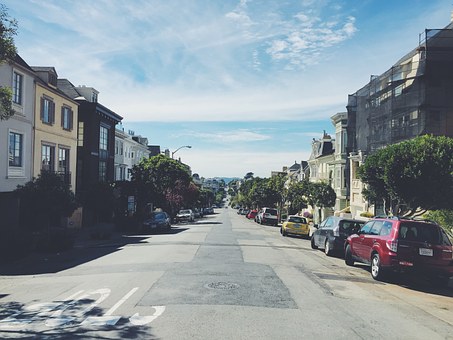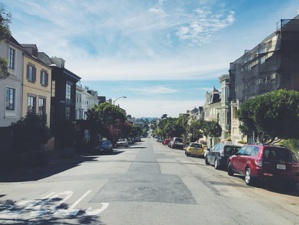Dailycsr.com – 31 May 2018 – Artificial intelligence prove that the hunches harboured by the residents of “Brooklyn’s Prospect Heights” neighbourhood and the “Hillcrest area of Washington, D.C.” are correct, whereby the former feel their streets getting safer while the latter are feeling “less secured” in their neighbourhood.
Researchers from “Harvard and MIT” are using a “new machine-learning algorithm” to combine pictures of “Google’s Street View” along with the safety perceptions of humans for rating them to see if they are becoming safer or more unsafe over time. The project Streetchange can equip the urban planners with an “artificial intelligence tools” for helping them to develop urban landscapes.
The demographic trends points at the fact that policymakers will “need all the help they can get”, as by 2050 as much as “two-thirds” global population will turn urban dwellers, whereby remaking society in a dramatic shift. At this juncture, it is “more critical than ever” that the urban planners need a comprehensive take on the “impact and implications” for delivering on the transformation.
Traditional methods for collecting data cannot give the desired picture, while carrying out surveys with the residents can prove to be time consuming and costly, while the responses could never be hundred percent reliable. However, Streetchange allows the data to be collected by using “Google Street View vehicles” and AI does processes the data at a much lower cost.
According to “a Harvard University Prize Fellow and co-author of a study about the research”, Nikhil Naik, Streetchange can provide “much more useful window” to learn about the impacts created on the communities by the demographic shifts. While, an economist “Center for Urban Science & Progress”, Julia Lane, agrees with Naik and states:
“This isn’t eye candy — it’s a very high-quality meal. These people are thinking through what the measures they’re analyzing actually mean. It’s pioneering — a terrific piece of work.”
A research linked together the neighbourhood’s perception of safety with “actual higher rates of criminality and poorer resident health outcomes” for many year, and Naik informed
“[Turns out] the human decision of whether a place looks safe or dangerous is a good proxy for whether that street has improved or declined”.
However, the researchers’ team went beyond “quantifying enhancement or decay” and sought to find patterns to see which characteristics, namely “population density, share of people with a college education, home prices, income, race and other factors”, tends to be “most predictive” indicating the improvement of a block.
According to their finding three aspects were indicative to the improvement in neighbourhood, which are “education, location and the elusive ‘tipping point’”.
However, “Naik cautions that Streetchange isn’t meant to show cause and effect — a viewer can’t know, for instance, whether highly educated people moving to a neighborhood caused it to improve or whether improvements attracted more highly educated people”. Nevertheless, he also adds that Streetchange could play a major role in the impact analysis of the developing world.
In Naik’s words:
“How does ethnic and demographic composition change neighborhoods? How does immigration change neighborhoods? This is typically an area of research done with limited good data.”
You can explore the maps of “New York City; Boston; Detroit; Baltimore; and Washington, D.C.” in Streetchange in the link provided below:
http://streetchange.media.mit.edu/maps.html
References:
3blmedia.com
Researchers from “Harvard and MIT” are using a “new machine-learning algorithm” to combine pictures of “Google’s Street View” along with the safety perceptions of humans for rating them to see if they are becoming safer or more unsafe over time. The project Streetchange can equip the urban planners with an “artificial intelligence tools” for helping them to develop urban landscapes.
The demographic trends points at the fact that policymakers will “need all the help they can get”, as by 2050 as much as “two-thirds” global population will turn urban dwellers, whereby remaking society in a dramatic shift. At this juncture, it is “more critical than ever” that the urban planners need a comprehensive take on the “impact and implications” for delivering on the transformation.
Traditional methods for collecting data cannot give the desired picture, while carrying out surveys with the residents can prove to be time consuming and costly, while the responses could never be hundred percent reliable. However, Streetchange allows the data to be collected by using “Google Street View vehicles” and AI does processes the data at a much lower cost.
According to “a Harvard University Prize Fellow and co-author of a study about the research”, Nikhil Naik, Streetchange can provide “much more useful window” to learn about the impacts created on the communities by the demographic shifts. While, an economist “Center for Urban Science & Progress”, Julia Lane, agrees with Naik and states:
“This isn’t eye candy — it’s a very high-quality meal. These people are thinking through what the measures they’re analyzing actually mean. It’s pioneering — a terrific piece of work.”
A research linked together the neighbourhood’s perception of safety with “actual higher rates of criminality and poorer resident health outcomes” for many year, and Naik informed
“[Turns out] the human decision of whether a place looks safe or dangerous is a good proxy for whether that street has improved or declined”.
However, the researchers’ team went beyond “quantifying enhancement or decay” and sought to find patterns to see which characteristics, namely “population density, share of people with a college education, home prices, income, race and other factors”, tends to be “most predictive” indicating the improvement of a block.
According to their finding three aspects were indicative to the improvement in neighbourhood, which are “education, location and the elusive ‘tipping point’”.
However, “Naik cautions that Streetchange isn’t meant to show cause and effect — a viewer can’t know, for instance, whether highly educated people moving to a neighborhood caused it to improve or whether improvements attracted more highly educated people”. Nevertheless, he also adds that Streetchange could play a major role in the impact analysis of the developing world.
In Naik’s words:
“How does ethnic and demographic composition change neighborhoods? How does immigration change neighborhoods? This is typically an area of research done with limited good data.”
You can explore the maps of “New York City; Boston; Detroit; Baltimore; and Washington, D.C.” in Streetchange in the link provided below:
http://streetchange.media.mit.edu/maps.html
References:
3blmedia.com


 Streetchange Could Contribute In The impact Analysis Of Demographic Shifts
Streetchange Could Contribute In The impact Analysis Of Demographic Shifts





 Companies
Companies